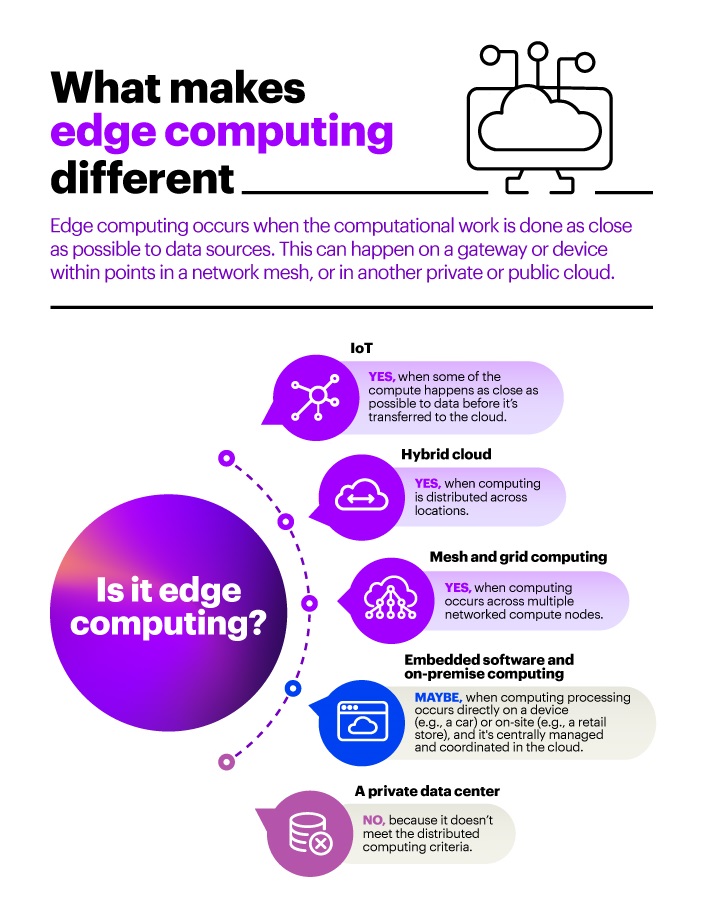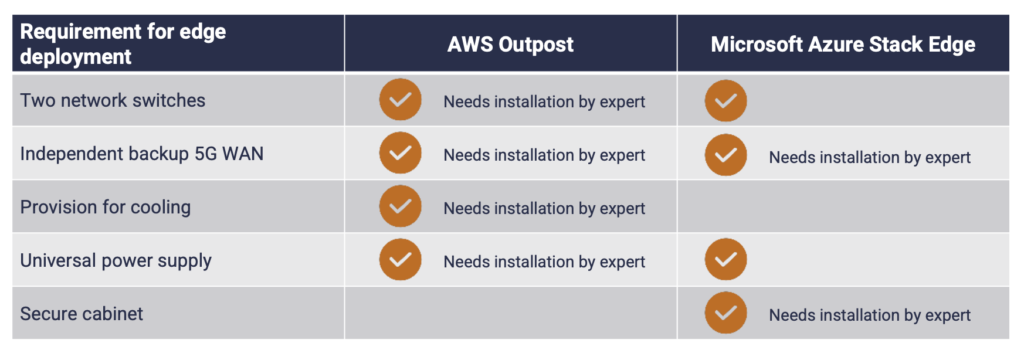Edge computing has been gaining popularity in recent years as a way to bring computing power closer to the source of data. This technology has the potential to revolutionize the way we process and analyze data in real-time. However, one of the biggest challenges for edge computing has been its high cost and complexity, which has limited its adoption.
Fortunately, recent advancements in technology have made edge computing more affordable and accessible. In this article, we will explore the factors that have contributed to this trend, including the development of powerful and affordable hardware, the emergence of open-source software, and the growth of cloud computing. We will also discuss the potential benefits of edge computing and how it can help businesses and organizations to improve their operations and better serve their customers.

What is Edge Computing?
Edge computing is a distributed computing architecture that involves running applications and data storage closer to the user or device. This type of architecture allows for faster response times and better performance, as well as greater flexibility in application design. Edge computing can also help reduce the cost of data transfer over the internet and reduce latency. In addition, it can reduce the need for expensive cloud infrastructure, as well as provide a more secure and reliable environment for applications.
What Factors Have Made Edge Computing Cheaper and Easier?
Cost Reduction
Edge computing has become more cost-effective due to a number of factors. For one, the cost of hardware has decreased significantly in recent years, making it more affordable to deploy edge computing solutions. Additionally, the cost of bandwidth has also decreased, making it easier and more cost-effective to transfer data across the internet. Finally, the increased availability of cloud-based services has made it easier to deploy edge computing solutions using cloud-based tools and services.
Ease of Deployment
Edge computing solutions are also becoming easier to deploy, thanks to the availability of a variety of cloud-based tools. These tools make it easier to set up and manage distributed applications, as well as handle data transfer and storage. Additionally, cloud-based services make it easier to deploy applications in remote locations, as well as manage them from a centralized location. This helps to reduce the cost and complexity of deploying and managing edge computing solutions.
Performance Benefits
Edge computing solutions offer a number of performance benefits, including faster response times and better performance for applications. This is due in part to the fact that data is stored and processed closer to the user or device, which reduces the amount of time required to transfer data across the internet. Additionally, edge computing solutions can reduce latency, which can help to improve the responsiveness of applications.
Security Benefits
Edge computing solutions also offer improved security compared to traditional cloud architectures. This is due to the fact that data is stored and processed closer to the user or device, making it more difficult to intercept. Additionally, edge computing solutions can also provide a more secure environment for applications, as they are not dependent on the security of the cloud infrastructure.
Flexibility
Edge computing solutions offer greater flexibility in application design, as they allow for applications to be deployed and managed in a distributed manner. This allows for applications to be tailored to the user’s needs, as well as for applications to be deployed in remote locations. Additionally, edge computing solutions allow for applications to be scaled up or down quickly and easily, making them more suitable for applications with fluctuating demand.
Frequently Asked Questions
This section explains various factors that have made edge computing cheaper and easier.
What factors have made edge computing cheaper?
Edge computing is much cheaper than traditional cloud computing due to several factors. Firstly, the cost of hardware and components are much less than that of cloud computing as the hardware can be purchased in bulk for a much lower cost. Secondly, edge computing does not require extensive data center infrastructure, which cuts down on the costs. Additionally, edge computing requires less data storage and bandwidth, which further helps to reduce costs. Finally, edge computing also requires less energy to power the hardware, which can help to reduce the cost of electricity.
What factors have made edge computing easier?
Edge computing has become much easier to implement thanks to advances in technology. Increasingly powerful and affordable hardware such as micro-controllers and low-power processors have enabled edge computing to be implemented in various environments. Furthermore, advances in networking technology such as Wi-Fi, cellular data and bluetooth have enabled edge computing to be deployed in areas with limited internet connectivity. Additionally, advances in software such as artificial intelligence and machine learning have enabled edge computing to be used to process and analyze data in real-time.
What are the benefits of edge computing?
Edge computing offers a number of benefits that make it a great solution for many businesses. Firstly, edge computing has a much lower latency as data does not need to travel over the internet, which makes it ideal for applications that require real-time data processing. Additionally, edge computing is more secure as data does not need to travel over the internet, which reduces the risk of data being intercepted or compromised. Furthermore, edge computing is more reliable as hardware is not as prone to failure or downtime. Finally, edge computing is much more energy efficient as hardware does not need to be powered on all the time.
What are the challenges of edge computing?
Edge computing does come with some challenges that must be addressed. Firstly, edge computing requires specialized hardware and components that may not be readily available or affordable. Additionally, edge computing requires specialized knowledge and expertise to set up and maintain, which can be difficult to find. Furthermore, edge computing requires more data storage than traditional cloud computing, which can be costly. Finally, edge computing is more vulnerable to physical attacks, such as tampering with hardware, which must be addressed.
What are the applications of edge computing?
Edge computing has a wide range of applications across different industries. It is most commonly used in the Internet of Things (IoT) to process and analyze the data generated by IoT devices. Additionally, it is used in autonomous vehicles to process data from sensors in real-time. Furthermore, it is used in media streaming to reduce latency and improve streaming quality. Finally, edge computing is used in healthcare to process and analyze medical data in real-time.
In conclusion, the emergence of edge computing has revolutionized the way we process, store and analyze data. The development of cheaper and easier edge computing can be attributed to several key factors. Firstly, the decreasing costs of hardware components such as sensors, processors and memory have made it possible for edge devices to be produced at a lower cost. Secondly, advancements in cloud and networking technologies have allowed for better connectivity and communication between edge devices and the cloud, reducing the need for expensive infrastructure.
Furthermore, the increasing demand for real-time data processing and analysis has fueled the growth of edge computing. With the rise of the Internet of Things (IoT) and connected devices, edge computing has become an integral part of the digital ecosystem. As more and more data is generated at the edge, the need for processing and analysis has become more critical. In conclusion, the combination of advancements in hardware, cloud, and networking technologies, along with the growing demand for real-time data processing has made edge computing cheaper and easier to implement, paving the way for a new era of digital transformation.



